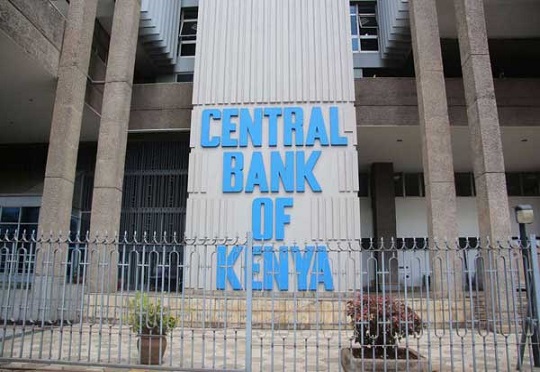
The Monetary Policy Committee (MPC) met on October 3, 2023, against a backdrop of continued global uncertainties,persistent inflationary pressures, increase in international oil prices, a weak global growth outlook, geopolitical tensions, and measures taken by authorities around the world in response to these developments.
The MPC reviewed the outcomes of its previous decisions and measures implemented to mitigate the adverse economic impact and financial disruptions.

• The global growth outlook remains weak, reflecting the impact of monetary policy tightening in advanced economies, weakening demand particularly in China and the Eurozone, and heightened geopolitical tensions which continue to weigh down on economic activity.
Additionally, headline inflation rates in advanced economies have remained above the respective targets, due to persistent core inflationary pressures, and higher energy costs following recent increases in the price of oil.
Global food prices have declined from the peak levels witnessed in 2022 except for a few items such as sugar and rice.
• Kenya’s overall inflation remained broadly unchanged at 6.8 percent in September 2023, compared to 6.7 percent in August, which is within the government’s target range.
Food inflation increased to 7.9 percent in September from 7.5 percent in August, largely on account of increases in the prices of a few key vegetables particularly onions, Irish potatoes,cabbages, spinach, kales (sukuma wiki), and tomatoes.
Prices of key non-vegetable food items particularly maize and wheat flour declined following improved supply attributed to the ongoing harvests and government measures to zero-rate key food imports.
Fuel inflation remained elevated at 13.1 percent in September, reflecting the impact of the rise in international oil prices.
Non-food non-fuel (NFNF) inflation remained stable at 3.7 percent in both September and August, reflecting the impact of monetary policy measures and muted demand pressures.
Overall inflation is expected to remain within the target range in the near term, supported by lower food prices with the improving supply of key food items particularly maize, and the implementation of Government measures to improve the supply of sugar through imports.
• The Survey of the Agriculture Sector conducted in the first half of September 2023 showed that the prices of key food items, particularly maize, were expected to decline further with the ongoing harvests in the main maize producing areas of the country.
• Leading indicators of economic activity for Kenya point to strong performance in 2023,supported by the continued robust growth of the services sectors, the rebound in agriculture,and the ongoing implementation of measures to boost economic activity in priority sectors
by the Government.
• The CEOs and Market Perceptions Surveys, which were conducted ahead of the MPC meeting, revealed improved optimism about business activity and economic growth prospects for the next 12 months.
Respondents attributed this optimism largely to enhanced agricultural production, easing inflation, and improved growth prospects.
Nevertheless,respondents’ concerns included higher fuel and electricity prices, reduced purchasing power affecting demand for products, and the possible negative effects of the El Niño weather or products, and the possible negative effects of the El Niño weather phenomenon.
Goods exports increased marginally in the 12 months to August 2023, growing by 0.5 percent compared to a similar period in 2022.
Receipts from tea and manufactured exports increased by 4.5 percent and 23.2 percent, respectively.
The increase in tea export receipts reflects higher prices due to demand from traditional markets, while the higher manufactured exports receipts reflect strong regional demand.
Imports declined by 11.9 percent in the 12 months to August 2023 compared to a growth of 16.0 percent in a similar period in 2022, mainly reflecting lower imports of infrastructure related equipment,manufactured goods, oil, and chemicals.
Tourist arrivals improved by 34 percent in the 8months to August 2023 compared to a similar period in 2022, and increased by 55 percent in August 2023 compared with August 2022.
Remittances totalled USD4,120 million in the 12 months to August 2023, and were 3.2 percent higher compared to a similar period in2022.
The current account deficit is estimated at 3.7 percent of GDP in the 12 months to August 2023 and is projected to improve from the 5.1 percent of GDP in 2022 to 4.1 percent of GDP in 2023.
• The CBK foreign exchange reserves, which currently stand at USD6,901 million (3.70 months of import cover), continue to provide adequate cover and a buffer against any short term shocks in the foreign exchange market.
• The banking sector remains stable and resilient, with strong liquidity and capital adequacy ratios. The ratio of gross non-performing loans (NPLs) to gross loans stood at 15.0 percent in August 2023 compared to 14.2 percent in August 2022.
Increases in NPLs were noted in the manufacturing, mining and quarrying, real estate, and building and construction sectors.
Banks have continued to make adequate provisions for the NPLs.
• Growth in private sector credit stood at 12.6 percent in August 2023 and 10.3 percent in July.
Strong credit growth was observed in manufacturing (19.6 percent), transport and communication (24.9 percent), trade (9.4 percent), and consumer durables (12.7 percent).
The number of loan applications and approvals remained strong, reflecting resilient economic activities.
• The Committee noted the ongoing implementation of the FY2023/24 Government Budget,which continues to reinforce fiscal consolidation.
• The Committee assessed the progress in the implementation of the new monetary policy framework, which is based on an interest rate corridor of ±250 basis points around The Central Bank Rate (CBR).
The MPC noted that interbank market activity has increased while volatility in interbank interest rates had reduced.
Additionally, spreads in the interbank interest rates have narrowed with improved liquidity distribution.
The MPC noted that inflation is expected to remain within the target range, supported by lower food prices with the expected improved supply. Additionally, the MPC observed that Inflation was expected to decline, indicative of easing underlying inflationary pressures.
The Committee further assessed that the impact of the tightening of monetary policy in June 2023 to anchor inflationary expectations was still transmitting in the economy. In view of these developments, the MPC decided to retain the Central Bank Rate (CBR) at 10.50 percent.
The Committee will closely monitor the impact of the policy measures, as well as developments in the global and domestic economy, and stands ready to take further action as necessary.
The Committee will meet again in December 2023.












2 thoughts on “MPC:Inflation expected to remain within target range and low Food Prices”